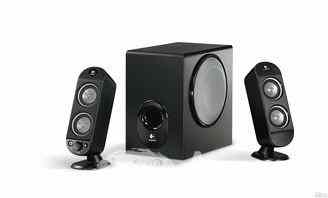Sound Engineer's Lecture | How to Match Amplifiers and Speakers
When designing and installing a sound system, it is inevitable that the amplifier and the speaker are matched. From the artistic point of view, the matching of the amplifier and the speaker should be warm and comfortable in the tone, moderate in hardness and softness, and finally the sound of the whole set of equipment is neutral. From the technical point of view, the power amplifier and speaker mating have the following points: power matching; impedance matching; damping coefficient matching. If we recognize the above three points when mating, the performance of the equipment used can be fully utilized.

Power Matching <br> In order to achieve high fidelity listening requirements, the rated power should be determined based on the optimal listening sound pressure. We all have the feeling that the volume is small, the sound is weak, the thinness, the dynamic can not come out, the dullness, the low frequency is obviously lacking, the fullness is poor, and the sound seems to shrink in the inside. When the volume is right, the sound is natural, clear, round, soft, full, powerful and dynamic. However, when the volume is too large, the sound is not soft, rough, and has a feeling of being rooted. Therefore, the sound pressure level of the playback has a large relationship with the sound quality. It is recommended that the sound pressure level of the listening area is preferably 80 to 85 dB (A weighting). We can calculate the distance from the listening area to the speaker and the characteristic sensitivity of the speaker. The rated power of the speaker and the rated power of the amplifier.

Speaker <br> In order to be able to withstand the impact of strong pulses in the program signal without damage or distortion. Here is an empirical value for reference: the nominal power rating of the selected speaker should be more than twice the theoretically calculated power.
Amplifier
Compared to transistor amplifiers, tube amplifiers require different regular reserves. This is because the overcharge curve of the tube amp is relatively flat. For the peak of the over-charged music signal, the tube amp does not obviously cause clipping, but only rounds the tip of the peak. This is the flexible shear peak we often say. When the transistor power is placed at the overload point, the nonlinear distortion increases rapidly, and the signal is severely clipped. It does not round the peak but tidy it flat. Some people use a composite impedance analog loudspeaker consisting of resistors, inductors, and capacitors to test the actual output capability of several high-quality transistor amplifiers. The results show that in the case of phase shift of the load, there is a nominal 100W power amplifier, the actual output power is only 5W when the distortion is 1%! Therefore, the selection of the reserve of the transistor power amplifier: high-fidelity power amplifier: 10 Times, civilian high-end amplifier: 6 to 7 times, civilian mid-range amplifier: 3 to 4 times. The tube amp can be much smaller than the above ratio. How much margin should be left for the average sound pressure level of the system and the maximum sound pressure level, depending on the content of the program and the working environment. This redundancy is at least 10dB. For modern pop music, Judy and other music, you need to leave 20~25dB redundancy, which can make the sound system work safely and stably.
Impedance matching
The output of the amplifier and the input impedance of the speaker should also be the same. Although there are some slight deviations between the two, there is no obvious influence on the sound quality, but it will only affect the output power of the amplifier. However, it must be reminded that if the input impedance of the speaker is lower than the output impedance of the amplifier, the distortion will increase significantly. In severe cases, the amplifier will be destroyed. Therefore, everyone still tries to choose the same two.
Damping coefficient matching
The damping coefficient KD is defined as: KD = rated output impedance of the amplifier (equal to the rated impedance of the speaker) / internal resistance of the amplifier output. Since the internal resistance of the amplifier output has actually become the resistor of the speaker, the KD value determines the amount of resistance the speaker receives. The larger the KD value is, the heavier the resistance is. Of course, the KD value of the power amplifier is not as large as possible. If the KD value is too large, the speaker resistance is too heavy, so that the pulse front time is established and the transient response index is lowered. Therefore, when selecting an amplifier, one should not pursue a large KD value. As a household high-fidelity power amplifier damping coefficient has an empirical value for reference, the minimum requirements: transistor power amplifier KD value is greater than or equal to 40, the tube power amplifier KD value is greater than or equal to 6.
It should be known that if the damping coefficient is too high, the sound coming out of the speaker will be dry and not round; if it is low, it will easily feel the sound sticking together. Therefore, when you are doing power amplifier configuration, you should pay attention to the damping coefficient of the stone machine is controlled between 30 and 40. The amplifier is high because of its internal resistance, so please do not exceed 10.
The most important of these three principles is the first point. Here we repeat, the matching of the amplifier and the speaker, rather the big horse-drawn car, and the last small horse does not move.
Devicenet Canopen,Devicenet Connection Cable,Din Cable M12 Connector,Devicenet Cable Connector
Kunshan SVL Electric Co.,Ltd , https://www.svlelectric.com